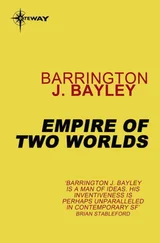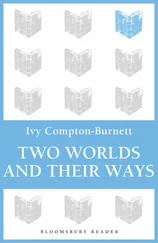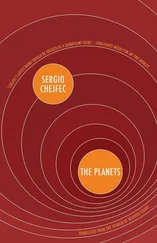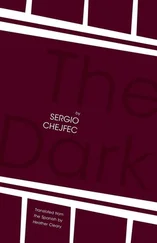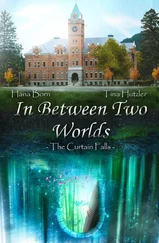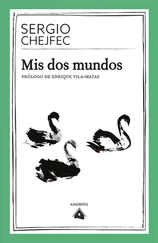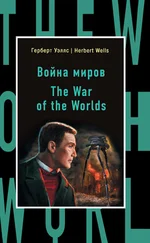The bird should remain at rest and the observer, whoever it is, perhaps myself, should stand in front of the creature, at some distance or closer-up, but facing it straight on. This exercise is impractical with fidgety birds, in general the smaller ones. It is the larger birds, much higher up the scale, and a few medium-sized birds, or those slightly removed from the aerial world, roosters for example, that make a greater impression. When you look at them you receive a terrible shock, because it’s hard to avert your eyes. It’s much more complicated than looking at fire, of course, because while the flames elicit an innocent fascination, which lets you have thoughts that are distant in time and space, the gaze of a bird induces the most anguished stupor in the observer, such that the bird’s violent origin can be seen; that is, both poverty and delirium at the same time. Afterward, in my experience, and in that of others who have mentioned theirs, it’s advisable and with effort, possible to turn your eyes from the creature’s transparent gaze, but it’s impossible not to turn them back to it again. You may think you’ve broken free, but unawares you are once more unavoidably drawn to the same icy, never-ending stare.
I remained observing the aviary a little while longer. A few of the large birds had changed their places, and now a pale beam of sun lit up their beaks from above. And the spatial counterpoint their beaks created with the meat almost on the floor had intensified, so much so that for a moment I imagined that my eyes were the vertex of a rather large angle: one line represented my downward gaze at the birds’ red meat, while the other shot upward, where the beaks could be seen.
The shady path I had come along continued toward the park’s interior. I caught sight of a bright point toward the end of the path — the afternoon light, as it turned out. I headed in that direction, since I intended to keep strolling through the park and the idea of a slight change in scenery appealed to me. Before I left the canopy of trees that surrounded the aviary, I looked back several times, a habit of mine, and was struck by the color of the ground in the aviary and its environs. It seemed like another surface, not dirty but dirtied, though no stains or traces of garbage were visible. It had a different shade of color, most likely owing to the birds and their constant production of feathers, dust, and droppings, scattered in great part by the breeze. I wanted to study that color more closely, but meanwhile told myself that if anyone saw me stopping repeatedly to look back, he or she might think I’d been seized by a kind of fear of or obsession with birds. No matter where I am or what I do, I cannot free myself from the thought that I’m being observed and judged by others, nor from my frustrating inability to imagine the nature of their evaluations.
As I approached the open section of the park, which from my perspective promised to be fairly large, I could more clearly make out splotches of color that represented people in various postures and situations: they were sitting on benches, walking, or lying in the sun and under isolated trees. A large fountain in the center sprayed jets of water all around, creating a mist that blurred the surrounding space like a vaporous, unmoving cloud. When I reached the tree-lined mall and got closer to the fountain, I saw bougainvilleas again, purple like those in the circular garden, spread out here and there over a much greater space. As perhaps might be imagined, I instantly felt a bond with the few people walking there, since they were sharing in that halfheartedness, even lethargy, of mine toward walking in parks, which I referred to earlier as well.
So I began to think about how long I’ve been taking walks. Years, decades. And if I live significantly longer I could keep on adding, because one thing I’m sure of is that I’ll never stop. But despite this great amount of walking, however, no walk has provided me with any genuine revelation. In my case it’s not as it was in the past, when walkers felt reunited with something that was revealed only during the course of the walk, or believed they had discovered aspects of the world or relationships within nature that had been hidden until then. I never discovered anything, only a vague idea of what was new and different, and rather fleeting at that. I now think I went on walks to experience a specific type of anxiety, one that I’ll call nostalgic anxiety, or empty nostalgia. Nostalgic anxiety would be a state of deprivation in which one has no chance for genuine nostalgia. There may be various reasons for the block. If I’m going to explain it, I have to tell the story of my borrowed ideas, which I’m full of — I say “borrowed,” but I’m not suggesting I don’t have full rights to them, on the contrary. .
One of these ideas, among the first I assimilated so thoroughly as to make it my own, was the idealization, initially during the Romantic Era, then the Modern, of the long walk. There must have been something wrong with me, because at the point at which I should have chosen a way of life for my future, I found nothing persuasive. From early on I’ve felt unequal to any kind of enthusiasm: incapable of believing in almost anything, or frankly, in anything at all; disappointed beforehand by politics; skeptical of youth culture despite being, at the time, young; an idle spectator at the collective race for money and so-called material success; suspicious of the benevolence of charity and of self-improvement; oblivious of the benefits of procreation and the possibilities of biological continuity; oblivious as well of the idea of following sports or any variety of spectacle; unable to work up enthusiasm for any impracticable profession or scientific vocation; inept at arts or at crafts, at physical or manual labor, also intellectual; to sum up, useless for work in general; unfit for dreaming; with no belief in any religious alternative while longing to be initiated into that realm; too shy or incompetent for an enthusiastic sex life; in short, given such failings, I had no other choice but to walk, which most resembled the vacant and available mind.
To walk and nothing but. Not to walk without a destination, as modern characters have been pleased to do, attentive to the novelties of chance and the terrain, but instead to distant destinations, nearly unreachable or inaccessible ones, putting maps to the test. I laughed when someone would tell me a city was too large. And laughed as well if they told me it was too small. A city has one size, a fact known only to the person who walks it aimlessly, for all the world like a curious dog when it’s strayed and lost its bearings, but isn’t hungry or lonely yet. Here lies the blurry distinction between the cities’ homeless and walkers such as me. One peers into a world where few, but definitive, rules divide people according to their street conduct and how long they remain there. I would often think. . What do I want to find? A glimpse of the tramp’s life, made up of nothing but fear and instant opportunism; or some old Modernist ideal that posited the long walk as the basis for a new urban religion. It’s too confused and I’m not sure. . That’s why I’ve kept on walking, out of insecurity and a lack of convictions, as if walking were the ultimate experience I could offer to the ruined landscape I move through, with strength neither to overcome it nor destroy it.
As I said, the other walkers in the park — colleagues, as it were, in these adventures and private sorrows — had scattered themselves out across the greenswards and the vast, gleaming concrete esplanades, near-white with reflections from the bright sky, that dominated the alameda. The visitors, randomly grouped this way, seemed to accentuate the geometrical order of the area, rather than disrupt it. Despite the differences in their ages — they ranged from breastfeeding infants to the elderly infirm — each of them exuded that air I referred to earlier, at once absent and absorbed, self-abandoned, the sign, according to my criterion, of genuine familiarity with a park, and with all places generally. The young people were the most sociable, and a few solitary individuals carried their own maté kits, from which every so often, pensively, they’d take a long pull, at least that’s how it seemed to me, or perhaps they were merely keeping the straw between their lips and forgetting to take a sip.
Читать дальше

